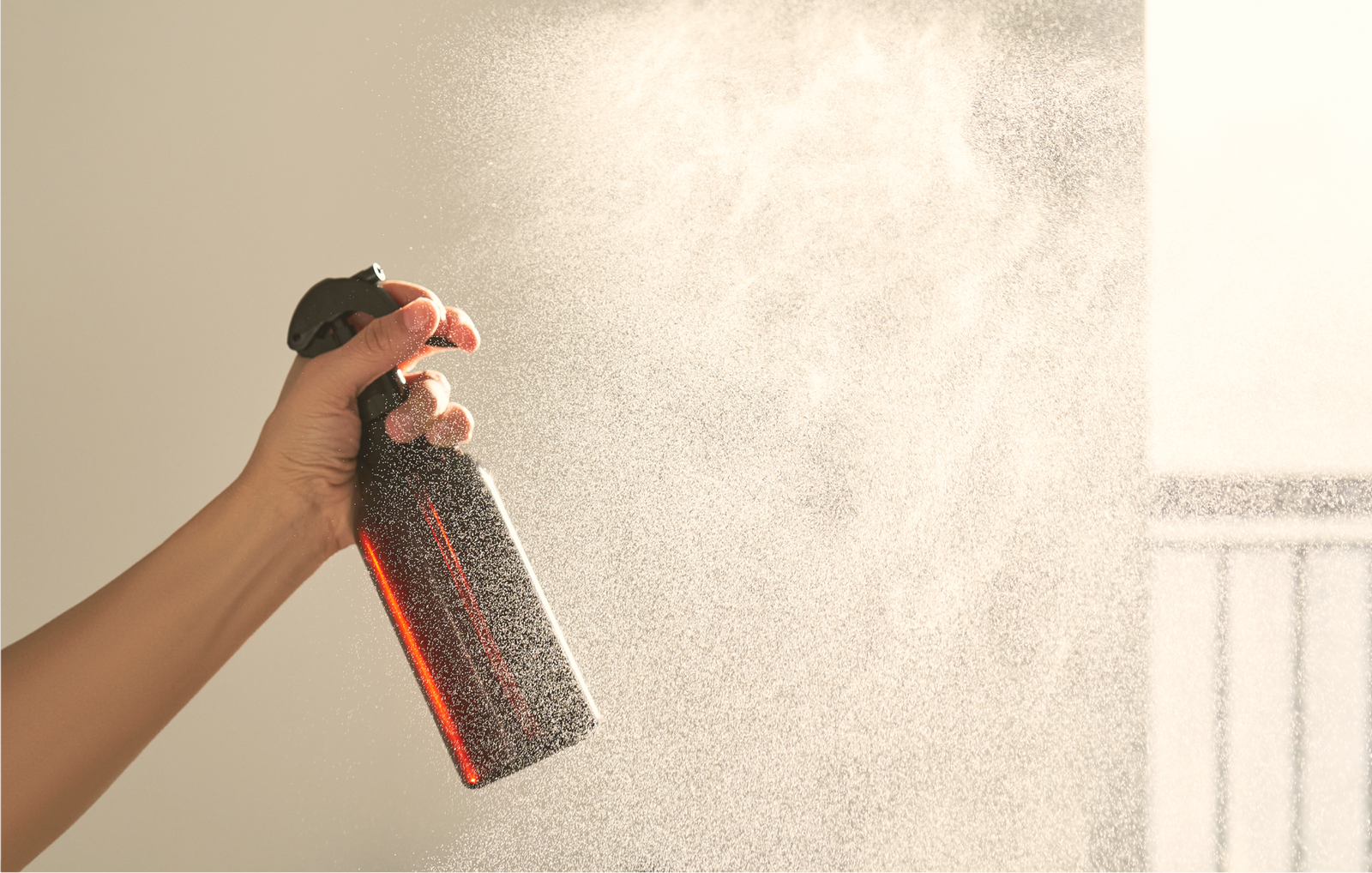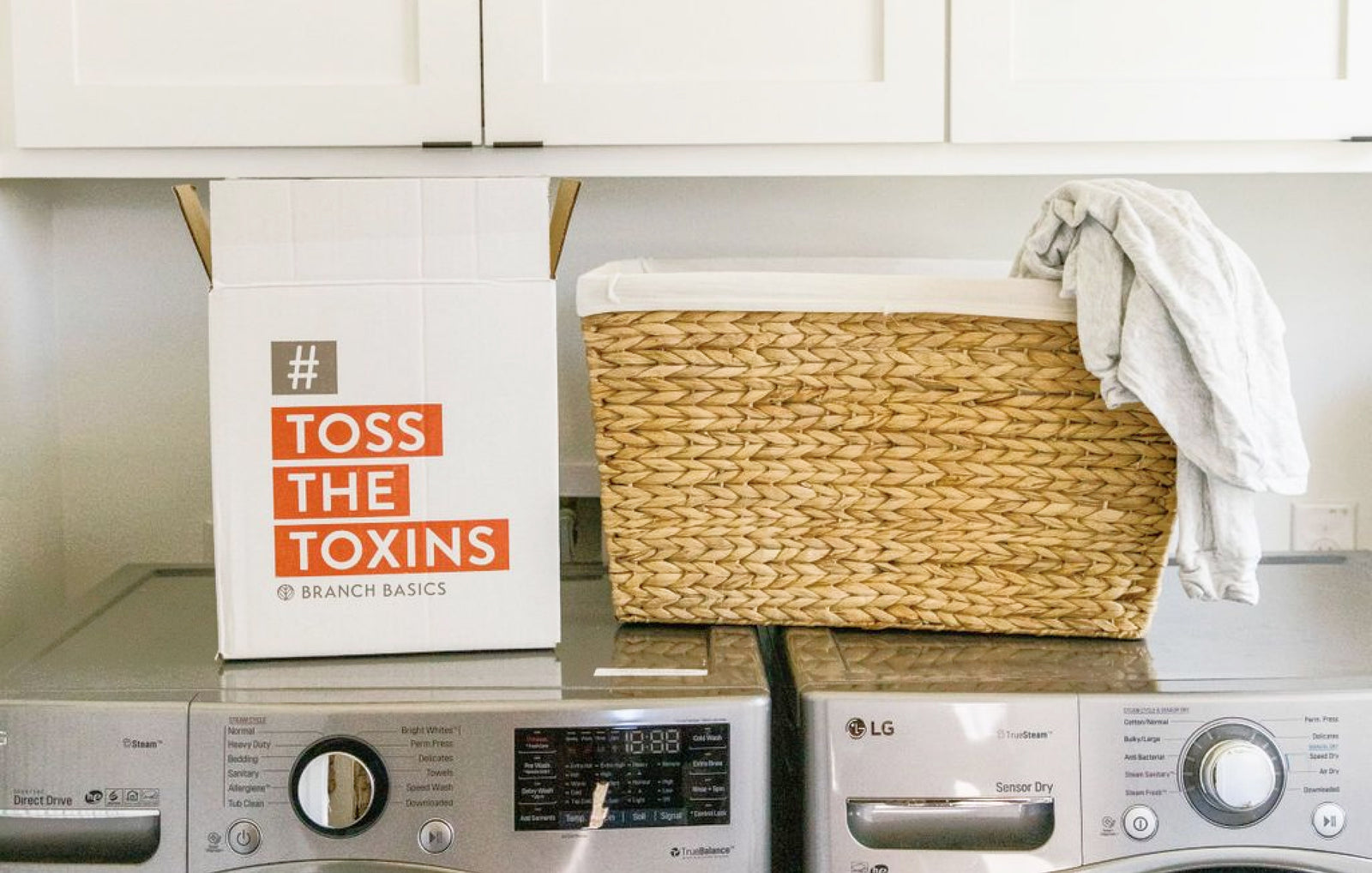Phenoxyethanol Side Effects: Hidden Dangers + Safer Alternatives

Phenoxyethanol is a common preservative and stabilizer used in personal care products, baby care products, and cleaning products (conventional and “green”).
Although the FDA and other regulatory bodies consider phenoxyethanol safe for use at low concentrations, reports of its adverse effects on infants, potential compounding effects, and other research suggest it is prudent to apply the precautionary principle.
In this article, you’ll learn all about phenoxyethanol, including what it is, what it’s used for, hidden sources of exposure, its potential side effects, and why we suggest avoiding it.
What Is Phenoxyethanol?
Phenoxyethanol (pronounced feeno-oxee-ethanol) is a glycol ether preservative and stabilizer used to prevent bacteria, mold, and other pathogens from forming in skin care, body care, personal care, baby care, cleaning products, and other topical applications.
It is lab-created (synthetic) by reacting phenol (a benzene derivative) and ethylene oxide to create phenoxyethanol, making it an ethoxylated chemical.
Ethoxylated chemicals are at high risk of contamination due to chemical reactions that can produce carcinogens, such as 1,4-dioxane and benzene.
The Scientific Committee on Consumer Safety and the FDA consider phenoxyethanol safe when used as a preservative in cosmetic products at a maximum concentration of 1%.[1][2]
However, phenoxyethanol is rated 2-4 on EWG Skin Deep due to concerns about non-reproductive organ toxicity, ecotoxicology, skin, eye, and lung Irritation, as well as occupational hazards.[3]
We’ll discuss more about phenoxyethanol side effects in subsequent sections.
Related reading: What Is 1,4 Dioxane In Cleaning Products?
What’s it Used For?
Phenoxyethanol is widely used in various consumer products, including:[4]
- Baby care products (shampoos, body washes, lotions, creams)
- Baby wipes
- Cosmetics (lipstick, blush, foundation, mascara)
- Perfume
- Hand soap
- Soap
- Body wash
- Body lotions and creams
- Shampoo
- Sunscreen
- Insect repellants
- Fragrances
- Perfume
- Antiseptics
- Facial care products like lotion, serums, and creams
- Hand sanitizer
- Skin care products
- Ultrasound gel
- Dyes
- Inks
- Cleaning products (including green cleaning products)
Its use as a preservative increased significantly as consumers became aware of the harms of parabens, which is why it’s also found in “green” products.
Related reading: Our Favorite Fragrance-Free Personal Care Products, and Our Non-Toxic Makeup Recommendations
Hidden Sources of Exposure
Although phenoxyethanol is typically listed on labels, it goes by many different names, which can make it difficult to spot.
Other names for phenoxyethanol include:
- 2-Phenoxyethanol
- Arosol
- Beta-hydroxyethyl phenyl ether
- Dowanol
- Euxyl K® 400
- Ethylene glycol monophenyl ether
- Phenoxyethanol
- PhE
- Phenoxetol
- Phenoxyethyl alcohol
- Rose ether
As noted previously, phenoxyethanol is also used in several “green” and “eco-friendly” products as a substitute for parabens, so be sure to read labels carefully.
Phenoxyethanol may also be hiding, unlabeled, in synthetic fragrances (it smells like roses), along with dozens of other ingredients, including known allergens, asthmagens, and other toxic ingredients.
Related reading: 20+ Best Human-Safe Cleaning Products (That Actually Work)
Phenoxyethanol: Prevalence Shown In Dust Testing Of American Homes
In the late 1990s, phenoxyethanol, as well as isothiazolinones (another widely used preservative in non-toxic products), began to appear in dust tests of my client's homes.
I contacted the European lab I work with, and the comment was that Americans have so many products containing these chemicals in their homes that they are now showing up in most dust samples.
Phenoxyethanol is not a VOC issue, as it has no odor, but it is an SVOC (semi-volatile organic compound). SVOCs are stealth toxins in the air as they have no odor. They ride on dust and increase over time. SVOCs are part of a home's chemical soup that you remove through the Toss the Toxins course I designed for my clients, now available through Branch Basics.
Removing products containing harmful chemicals, such as phenoxyethanol, from the home immediately improves air quality. Better air means better health!
Related reading: What Are VOCs? The Dangers + What You Need To Know
Phenoxyethanol Side Effects
Today, the safety of phenoxyethanol is a topic of debate.
On the one hand, the FDA and the Cosmetic Ingredient Review (CIR) panel have stated that it is safe for adults and children when used in concentrations of no more than 1%.
On the other hand, there are breastfeeding mothers whose babies were harmed by a nipple cream containing phenoxyethanol, which caused allergic reactions, trouble waking, respiratory distress, vomiting, diarrhea, and nervous system damage.[4]
Additionally, again, phenoxyethanol is the product of an ethoxylation process.
There are concerns about potential contamination with carcinogens such as benzene and 1,4-dioxane, given that phenol is derived from benzene, a known carcinogen, and ethylene oxide is also a carcinogen.[4][5][6][7]
Phenoxyethanol exposure has also been linked to:[4][8]
- Allergic skin reactions
- Eczema
- Hives
- Kidney damage
- Nerve damage
- Dermatitis
- Skin, lung, and liver irritation
Many of these studies used amounts greater than 1%, but again, most people apply more than 1% from their everyday skin and body care products.
So, Is Phenoxyethanol Safe, Or Not?
We’d suggest not, especially if you’re using more than one product containing phenoxyethanol (which most people do) or using it around infants, small children, people with chemical sensitivities, or the chronically ill.
Yes, the regulatory agencies say it’s safe in low concentrations (1%).
However, the reality is that most people use multiple products containing phenoxyethanol, which creates a higher level of daily exposure.
Its use in baby wipes is also problematic, as many people use baby wipes to wipe their baby’s face and mouth, which means they’re ingesting phenoxyethanol.
The genitals and anus also contain highly absorbent tissues, which readily soak up ingredients in baby wipes, for example, which are typically used multiple times daily over many months or years.
As you can see, the “safe at 1% concentration” rule isn’t exactly applicable to real life, which is why we suggest avoiding phenoxyethanol in baby care, skin care, body care, cosmetics, and cleaning products.
Finally, phenoxyethanol is toxic to aquatic life, making it environmentally unfriendly.[4][9]
Learn about the baby products we use in: Safe Baby Registry Guide: Natural Baby Products Every Parent Should Have.
Why Branch Basics Is A Safer Alternative
Preservatives are definitely worth scrutinizing, but they’re also essential for keeping products safe and shelf-stable.
As a human-safe cleaning company, we know the challenges of finding the safest, low-tox preservatives free from harmful byproducts, but we also know it is absolutely possible.
Here’s a run-down of the preservatives we use to keep Branch Basics products safe, shelf-stable, and long-lasting:
-
Sodium Phytate (aka: Phytic Acid): Found in Branch Basics Concentrate & Gel Hand Soap, this rice-bran derivative acts as a natural preservative and stabilizer
- EWG rating: 2[10]
- EWG rating: 2[10]
-
Tocopherol (vitamin E): Found in Branch Basics Concentrate & Gel Hand Soap, vitamin E is a powerful antioxidant and natural preservative
- EWG rating: 1-2[11]
- EWG rating: 1-2[11]
-
Sodium Gluconate: Found in Branch Basics Laundry Detergent and Dishwasher Tablets, this sodium salt derived from glucose fermentation acts as a preservative and anti-redeposition agent.
- EWG rating: 1[12]
- EWG rating: 1[12]
These preservatives are also suitable for the most sensitive skin, and are 100% biodegradable, making them gentle on the environment.
Toss the Toxins With Branch Basics
If you’re looking for a human-safe cleaning line that’s free from harmful preservatives, ethoxylated ingredients, petroleum products, parabens, phenoxyethanol, and other harsh synthetics —and actually works —check out Branch Basics Starter Kits.
Our Premium Starter Kit (available in plastic or glass) is our original, all-in-one, refillable cleaning system, designed to replace every harsh synthetic cleaner and laundry product in your home with just one Concentrate, plus a two-ingredient mineral-based Oxygen Boost laundry booster and bleach alternative.
Our Ultimate Starter Kit (available in plastic or glass) also utilizes the refillable Concentrate model and includes our new water-free Laundry Detergent, as well as plastic-free Dishwasher Tablets, for a complete Branch Basics experience.
All Branch Basics products are human-safe, MADE SAFE certified, EWG-verified, or rated A, 100% biodegradable, and plant- and mineral-based.
Shop all Branch Basics products.
To learn more about the ingredients in our human-safe products, check out:
-
Journey To Our New Formula
-
How To Use Branch Basics Oxygen Boost [Complete Guide]
-
Breaking Down The Ingredients in Our Human-Safe Laundry Detergent
-
Our New And Improved Dishwasher Tablets
-
Breaking Down Our Healthy Gel Hand Soap Ingredients
- Comparing Branch Basics Laundry Detergent Vs. Laundry Dilution: What’s The Difference?
References:
-
https://cir-reports.cir-safety.org/view-attachment/?id=face160b-8e74-ec11-8943-0022482f06a6
-
https://www.epa.gov/hazardous-air-pollutants-ethylene-oxide/ethylene-oxide-eto-risks-and-your-health
-
https://www.ewg.org/skindeep/ingredients/704811-PHENOXYETHANOL/
-
https://pmc.ncbi.nlm.nih.gov/articles/PMC6985251/#Sec14
-
https://www.aboutlawsuits.com/mommys-bliss-nipple-cream-recall-158/
-
https://www.epa.gov/sites/production/files/2016-09/documents/phenol.pdf
-
https://www.accessdata.fda.gov/scripts/cdrh/cfdocs/cfcfr/CFRSearch.cfm?fr=175.105&SearchTerm=ethylene%20glycol%20monophenyl%20ether
-
https://www.cancer.org/cancer/risk-prevention/chemicals/benzene.html
-
https://www.sciencedirect.com/topics/pharmacology-toxicology-and-pharmaceutical-science/2-phenoxyethanol
-
https://www.ewg.org/skindeep/ingredients/704845-PHYTIC_ACID/#.WXDFZMaNzIU
-
https://www.ewg.org/skindeep/ingredients/706564-TOCOPHEROL/
- https://www.ewg.org/skindeep/ingredients/706067-SODIUM_GLUCONATE/
Categories

Marilee Nelson
Marilee Nelson is an Environmental Toxins expert who has spent nearly 30 years advocating for the chemically-sensitive and chronically-ill. She is a Board Certified Nutritionist, Certified Bau-Biologist and Bau-Biology Inspector and specializes in Food As Medicine. She has helped thousands of families and individuals identify, heal and recover from toxic exposures and is on a mission to revolutionize the way American families view their health.








